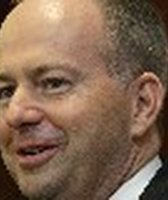Stand up for the facts!
Our only agenda is to publish the truth so you can be an informed participant in democracy.
We need your help.
I would like to contribute

Amendment 8 would loosen the class-size standards approved by voters in 2002.
The most controversial amendments proposed to Florida's Constitution this election would change how we adopt and amend land-use plans, how many students we'll have in public school classrooms, and how we draw election districts that will stand for the next 10 years.
Here's a review of some of our fact-checks.
Amendment 4, land-use changes
Background: This amendment was placed on the November ballot after Hometown Democracy was able to collect enough petition signatures statewide. The proposal is summarized as follows on the election ballot: "Establishes that before a local government may adopt a new comprehensive land use plan, or amend a comprehensive land use plan, the proposed plan or amendment shall be subject to vote of the electors of the local government by referendum, following preparation by the local planning agency, consideration by the governing body and notice."
Essentially the proposal would allow voters to decide on changes to local land use plans, rather than having the decision rest in the hands of city councils, county commissions or appointed local planning agencies.
We looked at a claim in a web ad by Hometown Democracy that development ends up costing taxpayers, not benefiting them. We found studies that agreed with that point when it comes to large single-family developments. But other studies found benefits to taxpayers for commercial, industrial and neighborhood in-fill development. We rated it Half True.
We looked at another claim, by the No on 4 group, saying that Amendment 4 will reduce Florida's economic output by $34 billion annually. A number of experts, even some who oppose Amendment 4, agreed that it's much too early to make a blanket statement about the impact. We pegged this one at Barely True.
We tracked down a chain e-mail that claims many of the companies opposing Amendment 4 benefited from "humongous" federal tax relief. In a bit of a quirk, it turns out the bulk of the e-mail was lifted from a column by Miami Herald columnist and author Carl Hiaasen, though he had nothing to do with the e-mail. As for the facts, we said Half True. At least a dozen companies that gave hundreds of thousands of dollars to Vote No on 4 also got hundreds of millions of dollars in tax relief.
The No on 4 group often cites the experiences of the town of St. Pete Beach as an example of what can go wrong if Amendment 4 passes. We agreed that four years of political battle there have created a mess, but we said only Half True to the comparison and warned voters to be wary of linking the town to the amendment. We wrote two other Truth-O-Meter items about St. Pete Beach, which you can see here and here.
Amendment 8, class size
Background: In 2002, parents fed up with overcrowded classrooms helped pass an amendment to limit class sizes in Florida. With school districts facing the full effects of that amendment in 2010, the Legislature put another amendment on the ballot to ask if voters want to change the first one.
Amendment 8 would tweak the rules to allow class sizes to be measured based on school averages rather than on classroom caps -- though there are also caps in terms of how many students are assigned per teacher. Supporters of the amendment say the 2002 rules are too rigid and expensive to implement. But opponents say it's crucial to limit class sizes as the previous amendment intended.
The Florida Division of Elections website has the detailed summary of the issue that will appear on the ballot.
We looked at two claims. The first was from supporters of Amendment 8, who said there currently are 825,000 student stations (desks) sitting empty across Florida, so why should we allow the class sizes to grow? We noted the number of seats is really even more, 845,000, but criticized the implication that students could be simply shuffled around to balance any overcrowding. That one was Mostly True.
The opponents, called Vote No on 8, sent a mailer saying that passage would put "30 or more" students in your classrooms. We said it's not that simple, and rated it Half True.
Amendments 5 and 6, redistricting
Background: Efforts to reshape how Florida's voter districts are drawn brought two amendments from Fair Districts Florida, a citizens group that claims political leaders manipulate the redistricting process to benefit incumbents. The citizen group put two constitutional changes on the ballot that would require lawmakers to adhere to redistricting standards that don't favor incumbents when they redraw legislative and congressional lines starting next year.
The summaries of the two amendments are identical: "Congressional districts or districting plans may not be drawn to favor or disfavor an incumbent or political party. Districts shall not be drawn to deny racial or language minorities the equal opportunity to participate in the political process and elect representatives of their choice. Districts must be contiguous. Unless otherwise required, districts must be compact, as equal in population as feasible, and where feasible must make use of existing city, county and geographical boundaries."
Fair Districts tried to show the power of incumbency by pointing out that only three incumbents have been defeated in the last six years, out of the 420 elections for state senator and state representative. We found there had actually been 423 elections over the six-year period, but no matter: The claim of only three incumbents losing rated a True.
Amendments 1 and 2
The first two amendment proposals on the ballot are described on the state Division of Elections website. Amendment 1 deals with ending public financing of statewide elections. And Amendment 2 would provide an additional homestead property tax exemption for those on active duty in the military.
Our Sources
See individual Truth-O-Meter items.































